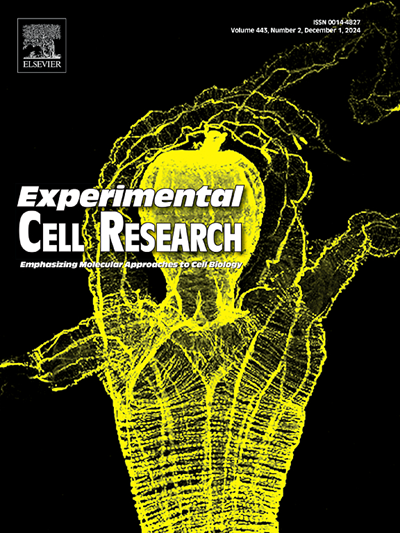Biomarkers for the detection of circulating tumor cells
IF 3.3
3区 生物学
Q3 CELL BIOLOGY
引用次数: 0
Abstract
Circulating tumor cells (CTCs) have emerged as a key biomarker in cancer detection and prognosis, and their molecular profiling is gaining importance in precision oncology. Liquid biopsies, which allow the extraction of CTCs, circulating tumor DNA (ctDNA) or cell-free DNA (cfDNA), have measurable advantages over traditional tissue biopsies, especially when molecular material is difficult to obtain. However, this method is not without limitations. Difficulties in differentiating between primary and metastatic lesions, uncertain predictive values and the complexity of the biomarkers used can prove challenging. Recently, high cell heterogeneity has been identified as the main obstacle to achieving high diagnostic accuracy. Because not all cells undergo epithelial-mesenchymal transition (EMT) at the same time, there is a large population of hybrid CTCs that express both epithelial and mesenchymal markers. Since traditional diagnostic tools primarily detect epithelial markers, they are often unable to detect cells with a hybrid phenotype; therefore, additional markers may be required to avoid false negatives. In this review, we summarize recent reports on emerging CTCs markers, with particular emphasis on their use in cancer diagnosis. Most of them, including vimentin, TWIST1, SNAI1, ZEB1, cadherins, CD44, TGM2, PD-L1 and GATA, hold promise for the detection of CTCs, but are also implicated in cancer progression, metastasis, and therapeutic resistance. Therefore, understanding the nature and drivers of epithelial-mesenchymal plasticity (EMP) is critical to advancing our knowledge in this field.
检测循环肿瘤细胞的生物标志物
循环肿瘤细胞(CTCs)已成为癌症检测和预后的关键生物标记物,其分子谱分析在精准肿瘤学中的重要性与日俱增。液体活检可提取 CTC、循环肿瘤 DNA (ctDNA) 或无细胞 DNA (cfDNA),与传统的组织活检相比具有可衡量的优势,尤其是在难以获得分子材料的情况下。然而,这种方法并非没有局限性。难以区分原发病灶和转移病灶、预测值不确定以及所用生物标记物的复杂性都会带来挑战。最近,细胞的高度异质性被认为是实现高诊断准确性的主要障碍。由于并非所有细胞都同时发生上皮-间质转化(EMT),因此存在大量同时表达上皮和间质标记的混合型 CTC。由于传统诊断工具主要检测上皮标记物,因此往往无法检测出具有混合表型的细胞;因此,可能需要额外的标记物来避免假阴性。在这篇综述中,我们总结了最近有关新出现的 CTCs 标记的报道,特别强调了它们在癌症诊断中的应用。其中大多数标记物,包括波形蛋白、TWIST1、SNAI1、ZEB1、粘连蛋白、CD44、TGM2、PD-L1 和 GATA,都有望用于 CTCs 的检测,但它们也与癌症进展、转移和治疗耐药性有关。因此,了解上皮-间充质可塑性(EMP)的本质和驱动因素对于增进我们在这一领域的知识至关重要。
本文章由计算机程序翻译,如有差异,请以英文原文为准。
求助全文
约1分钟内获得全文
求助全文
来源期刊

Experimental cell research
医学-细胞生物学
CiteScore
7.20
自引率
0.00%
发文量
295
审稿时长
30 days
期刊介绍:
Our scope includes but is not limited to areas such as: Chromosome biology; Chromatin and epigenetics; DNA repair; Gene regulation; Nuclear import-export; RNA processing; Non-coding RNAs; Organelle biology; The cytoskeleton; Intracellular trafficking; Cell-cell and cell-matrix interactions; Cell motility and migration; Cell proliferation; Cellular differentiation; Signal transduction; Programmed cell death.
 求助内容:
求助内容: 应助结果提醒方式:
应助结果提醒方式:


